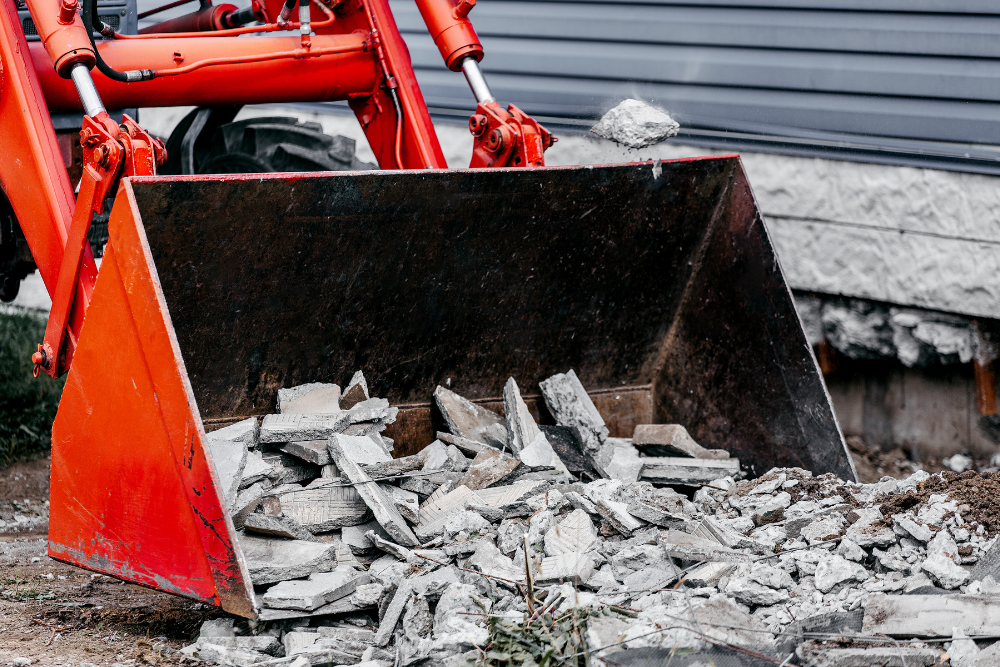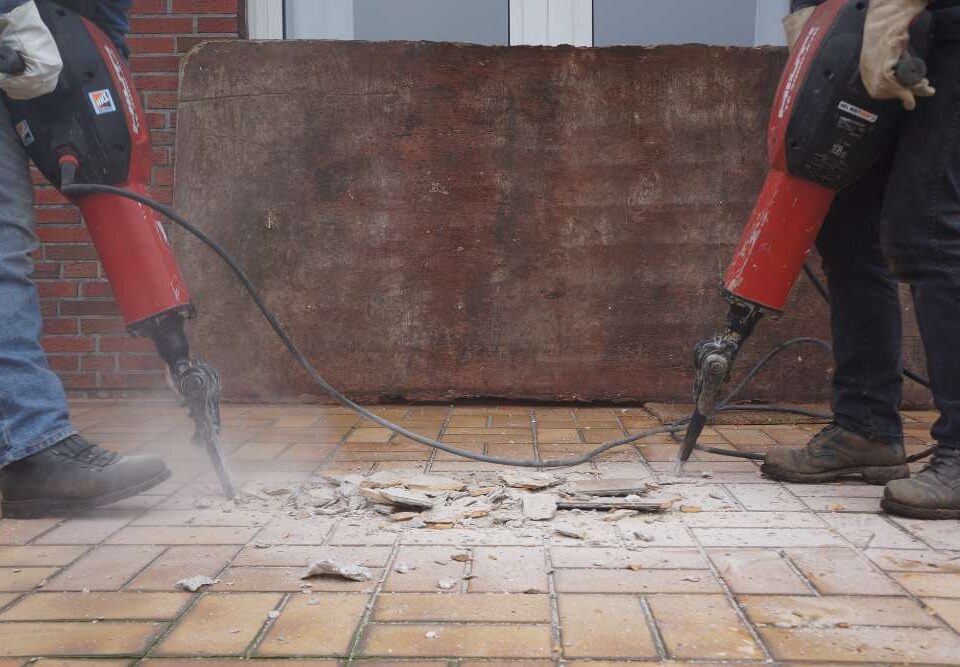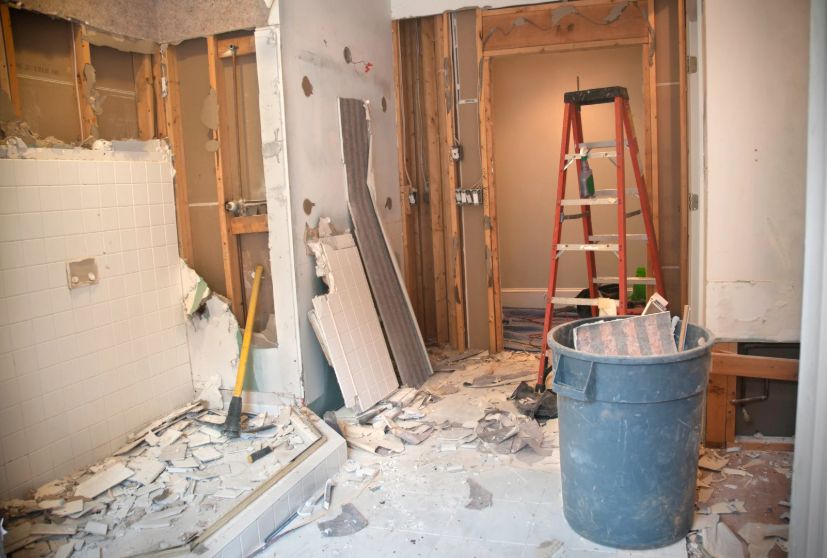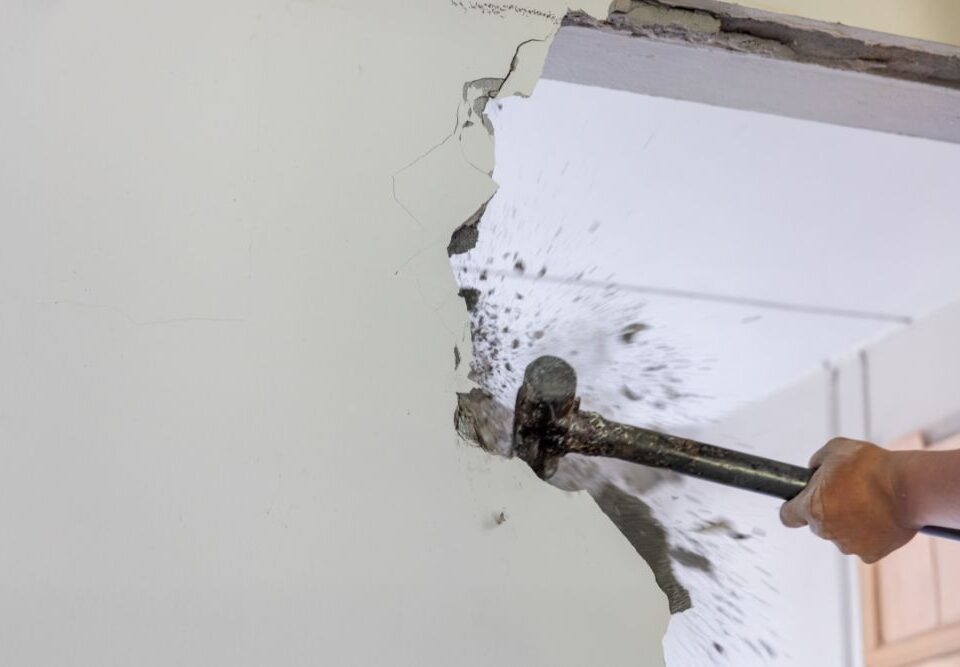
How Demolition Cleanup Makes Home Renovations Easier
September 2, 2025
The Best Techniques for Kitchen Demolition
September 2, 2025What to Do with the Debris After Concrete Removal
Removing concrete from your property can be a significant undertaking, but once the heavy lifting is done, the next challenge is managing the debris left behind. Concrete removal often results in large, heavy chunks that can be cumbersome to handle. Improper disposal not only clutters your space but can also pose environmental hazards. Understanding the best practices for dealing with concrete debris ensures a cleaner environment and may even offer opportunities for recycling or repurposing materials.
Renting a Roll-Off Dumpster for Concrete Disposal
One of the most efficient ways to manage concrete debris is by renting a roll-off dumpster. These large containers are designed to handle substantial amounts of waste, including heavy materials like concrete. By placing a roll-off dumpster on your property, you can easily load the debris as you work, keeping your site organized and safe.
When renting a roll-off dumpster, it’s essential to choose the right size to accommodate your project’s needs. Overloading a dumpster can lead to additional charges or complications during pickup. Ensure that the dumpster is placed on a stable surface to prevent accidents and that it’s not obstructing any pathways or driveways. Always check with the rental company about weight limits and any restrictions on the types of materials that can be disposed of.
Recycling Concrete Debris
Concrete recycling is an environmentally friendly option that reduces landfill waste and conserves natural resources. The process involves crushing the concrete into smaller pieces, which can then be used as aggregate in new construction projects. This method not only reuses the material but also saves on the energy and resources required to produce new concrete.
Before recycling, it’s crucial to remove any contaminants from the concrete, such as metals, wood, or plastic. Many recycling centers have specific guidelines on how to prepare concrete for recycling. By following these guidelines, you contribute to a more sustainable construction industry and help reduce the environmental impact of your project.

Donating Concrete Debris
If your concrete debris consists of large, intact pieces, consider donating them for reuse. Many organizations, including Habitat for Humanity, accept donations of building materials, including concrete. Donating not only helps others but also diverts waste from landfills, promoting a circular economy.
Before donating, contact the organization to ensure they accept concrete and to understand their requirements. Some may have restrictions on the type or condition of materials they can accept. By donating, you give your concrete debris a second life, benefiting both the community and the environment.
Hiring Professional Junk Removal Services
For those who prefer to leave the heavy lifting to the experts, hiring a professional junk removal service is a viable option. These services specialize in removing and disposing of various types of debris, including concrete. They have the necessary equipment and expertise to handle the job efficiently and safely.
When selecting a junk removal service, ensure they are licensed and insured. This protects you from potential liabilities and ensures that the company adheres to local regulations regarding waste disposal. Professional services can save you time and effort, allowing you to focus on other aspects of your project.
Utilizing Concrete Debris for Landscaping
Concrete debris can be repurposed creatively in landscaping projects. Broken concrete pieces, often referred to as “urbanite,” can be used to create pathways, retaining walls, or decorative features in your garden. This approach not only recycles the material but also adds a unique aesthetic to your outdoor space.
To use concrete debris in landscaping, break the pieces into manageable sizes and arrange them in your desired configuration. You can secure them with mortar or leave them loose for a more natural look. This method is cost-effective and adds character to your landscape design.
Contacting Local Construction and Demolition Facilities
Many local construction and demolition (C&D) facilities accept concrete debris for recycling or disposal. These facilities are equipped to handle large volumes of construction waste and often offer services at a lower cost than private companies. By contacting a local C&D facility, you can find a convenient and affordable way to dispose of your concrete debris.
Before visiting, check with the facility about their acceptance policies, fees, and any preparation requirements for the concrete. Some facilities may require you to separate the concrete from other materials or may have restrictions on the amount they can accept at one time. Planning ahead ensures a smooth disposal process.
Breaking Down Concrete Debris Yourself
If you have the necessary tools and skills, breaking down the concrete debris yourself can save on disposal costs. Using a sledgehammer or a concrete saw, you can break large pieces into smaller, more manageable chunks. This method requires physical labor and safety precautions but can be rewarding for DIY enthusiasts.
Always wear appropriate safety gear, including gloves, goggles, and a dust mask, when handling concrete debris. Ensure that the area is clear of obstacles and that you have a safe place to dispose of the broken pieces. Properly breaking down the debris makes the disposal process more manageable and efficient.
Exploring Local Recycling Programs
Some local municipalities offer recycling programs specifically for construction materials like concrete. These programs are designed to encourage recycling and reduce the amount of construction waste sent to landfills. By participating in these programs, you contribute to environmental conservation and may benefit from reduced disposal fees.
Research local recycling programs in your area to determine if they accept concrete debris and what their requirements are. Participation often involves sorting materials, preparing them for transport, and adhering to specific guidelines. Engaging with these programs supports sustainable practices in your community.
Understanding Legal Regulations for Concrete Disposal
Proper disposal of concrete debris is not only an environmental concern but also a legal one. Many regions have regulations governing the disposal of construction and demolition waste. Failing to adhere to these regulations can result in fines or other penalties.
Before disposing of concrete debris, familiarize yourself with local laws and regulations regarding waste disposal. This may include obtaining permits, using licensed disposal facilities, or following specific handling procedures. Complying with these regulations ensures that your disposal methods are legal and responsible.
Considering the Environmental Impact of Concrete Disposal
The disposal of concrete debris has significant environmental implications. Concrete production is resource-intensive, and improper disposal can lead to pollution and resource depletion. By choosing sustainable disposal methods, such as recycling or repurposing, you minimize your project’s environmental footprint.
Consider the long-term effects of your disposal choices on the environment. Opt for methods that conserve resources, reduce pollution, and promote sustainability. By being mindful of the environmental impact, you contribute to a healthier planet and set an example for responsible construction practices.
Conclusion
Dealing with concrete debris after removal requires careful planning and consideration of various disposal options. Whether you choose to rent a roll-off dumpster, recycle the material, donate it, or hire professional services, each method has its benefits and considerations. By exploring these options, you can find the most suitable solution for your project, ensuring efficient and responsible disposal of concrete debris.
For residents in Santa Rosa, CA, seeking professional assistance with junk removal, North Bay Junk Removal offers reliable services. Their team is equipped to handle various types of debris, including concrete, ensuring safe and efficient removal. Contact them at 707-478-6817 for more information or to schedule a service.




